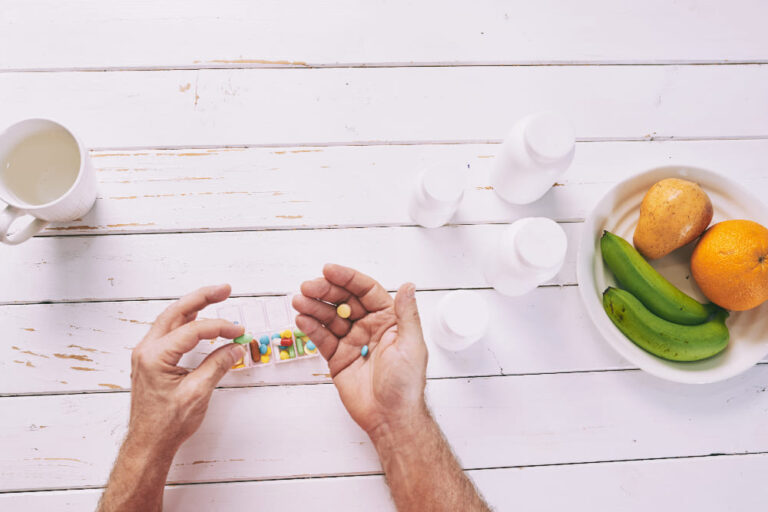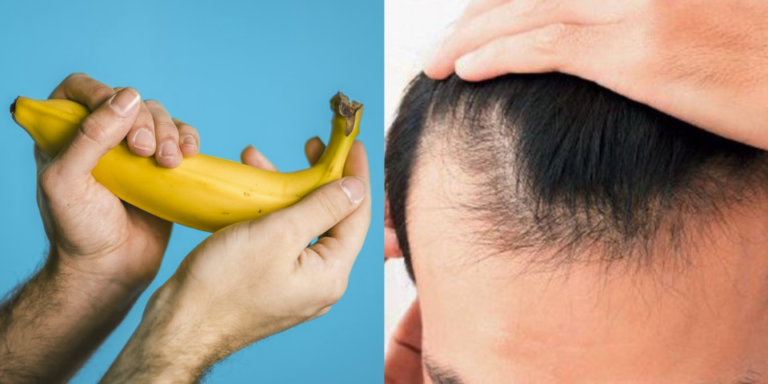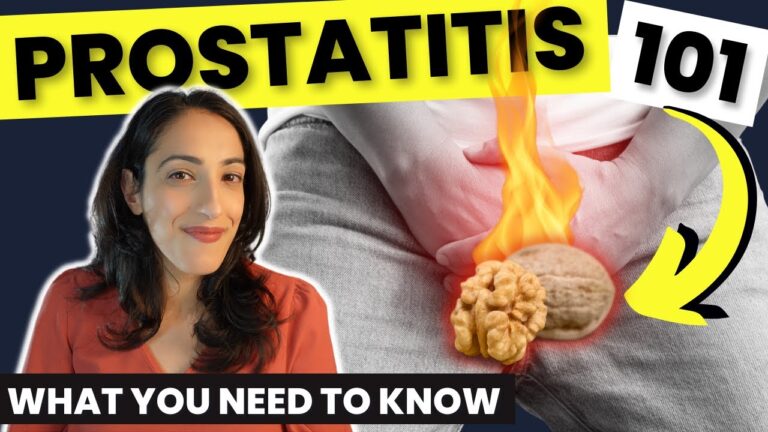How Your Menstrual Cycle Affects Your Libido and What to Do About It

Understanding the Menstrual Cycle: An Overview

The menstrual cycle is a complex and intricate process that occurs in the female reproductive system. It involves a series of hormonal changes and physiological events that prepare the body for potential pregnancy. Understanding the menstrual cycle is crucial for women to manage their reproductive health and overall well-being.
Generally, the menstrual cycle is a monthly occurrence that lasts about 28 days, although the length can vary from woman to woman. It consists of four main phases: the menstrual phase, follicular phase, ovulatory phase, and luteal phase. Each phase is characterized by different hormonal fluctuations and physiological changes in the uterus and ovaries.
During the menstrual phase, which typically lasts 3 to 7 days, the uterus sheds its lining in the form of menstrual blood. This marks the beginning of a new cycle. Following this, the follicular phase begins, and the follicles in the ovaries start to develop. It is during this phase that estrogen levels rise, stimulating the growth of the uterine lining. The ovulatory phase occurs around day 14 of the cycle, when an egg is released from the ovary. Finally, the luteal phase begins, and the ruptured follicle transforms into the corpus luteum. This phase is characterized by an increase in progesterone levels, which helps to prepare the uterus for possible implantation of a fertilized egg.
Understanding the menstrual cycle is essential for women to recognize any irregularities or potential issues in their reproductive health. By tracking their cycle and being aware of its different phases, women can make informed decisions regarding contraception, fertility planning, and overall reproductive well-being. It also enables them to identify any changes in their physical and emotional state that occur throughout the cycle, helping to better manage any discomfort or concerns that may arise.
The Hormonal Changes During the Menstrual Cycle
The menstrual cycle is a complex process that involves a series of hormonal changes within a woman’s body. These hormones, including estrogen, progesterone, and testosterone, play a crucial role in regulating the overall menstrual cycle and its subsequent physiological changes.
During the menstrual cycle, the levels of estrogen and progesterone rise and fall in a cyclic pattern. The first half of the cycle, known as the follicular phase, is characterized by an increase in estrogen production. This rise in estrogen levels helps to thicken the uterine lining in preparation for potential pregnancy. Additionally, estrogen has been linked to the regulation of mood and energy levels, which can influence a woman’s libido.
As the cycle progresses, the levels of estrogen decline, while progesterone begins to rise during the luteal phase. Progesterone acts to further support the development of the uterine lining and prepares the body for pregnancy. However, it is important to note that progesterone has been shown to have a suppressing effect on libido in some women. The interplay between estrogen and progesterone during these hormonal changes undoubtedly influences a woman’s sexual desire and arousal.
Understanding the intricate hormonal changes that occur during the menstrual cycle is essential in comprehending the impact they have on a woman’s libido. By delving deeper into the role of estrogen and progesterone, as well as other key factors, we can gain insight into the fluctuating levels of sexual desire experienced by women throughout their monthly cycles.
Impact of Hormonal Fluctuations on Libido
The intricate dance of hormones within the menstrual cycle can have a profound impact on a woman’s libido. As hormone levels fluctuate throughout the various phases of the cycle, it’s not uncommon for sexual desire to ebb and flow. Understanding these hormonal changes is key to navigating the ups and downs of libido during the menstrual cycle.
One of the primary hormones involved in libido regulation is estrogen. During the follicular phase of the cycle, which occurs in the days leading up to ovulation, estrogen levels rise steadily. This hormone plays a crucial role in enhancing sexual desire by increasing blood flow to the pelvic region and promoting the production of natural lubrication. In addition, estrogen helps to maintain the health and sensitivity of the vaginal tissues, contributing to overall sexual satisfaction. However, as estrogen levels decline during the luteal phase, which occurs after ovulation, libido may decrease as well.
The Role of Estrogen in Libido
Estrogen, one of the primary female sex hormones, plays a crucial role in the maintenance of libido in women. Throughout the menstrual cycle, estrogen levels fluctuate, influencing a woman’s sexual desire and arousal. During the follicular phase, which occurs in the first half of the menstrual cycle, estrogen levels rise steadily. This increase in estrogen encourages the growth of the uterine lining and stimulates the production of cervical mucus, creating a more favorable environment for conception. Additionally, estrogen enhances blood flow to the pelvic region, engorging the genitals and increasing sensitivity, which can heighten sexual pleasure. These physiological changes, influenced by estrogen, often correlate with a higher libido in many women.
However, it is essential to note that estrogen alone does not determine an individual’s libido. Other factors, such as psychological, social, and relational aspects, can also influence sexual desire. While estrogen plays a crucial role in maintaining a healthy libido, it is just one piece of the complex puzzle that encompasses a woman’s sexuality.
Progesterone and its Effect on Sexual Desire
Progesterone, a hormone primarily produced by the ovaries, plays a crucial role in the menstrual cycle and has a significant impact on sexual desire. During the luteal phase of the menstrual cycle, progesterone levels rise, causing changes in the body that can affect libido.
Research has shown that progesterone can have both positive and negative effects on sexual desire. Some women may experience an increase in sexual arousal and desire during this phase, while others may experience a decrease. The exact mechanism behind these variations is not fully understood, but it is believed to be influenced by factors such as individual hormone levels, psychological factors, and overall health.
One possible explanation for the decrease in libido during the luteal phase is the presence of premenstrual symptoms. Many women experience physical discomfort, mood swings, and fatigue during this time, which can contribute to a decrease in sexual desire. Additionally, the rise in progesterone levels during this phase can also lead to a decrease in testosterone, another hormone that plays a role in sexual function. However, it is important to note that not all women experience a decrease in libido during this phase, and individual variations are common.
Testosterone: A Key Player in Sexual Function
Testosterone is a vital hormone that plays a crucial role in sexual function in both men and women. Produced primarily in the testes in males and in the ovaries and adrenal glands in females, testosterone is responsible for stimulating sexual desire, enhancing arousal, and contributing to overall sexual satisfaction.
In men, testosterone is a key factor in the development and maintenance of sexual function. It helps regulate the production of sperm, promotes sexual interest and libido, and supports erectile function. Research has shown that low levels of testosterone can lead to a decrease in sexual desire, difficulty achieving or maintaining an erection, and a decrease in overall sexual satisfaction. However, it’s worth noting that testosterone alone is not the sole determinant of sexual function, as other factors like psychological well-being, relationship dynamics, and general health also play important roles.
Maintaining optimal levels of testosterone is essential for both men and women to support healthy sexual function. If you’re experiencing concerns about your sexual health, it is recommended to consult a healthcare provider who can provide further guidance and assess if any hormonal imbalances may be contributing to your symptoms.
Menstrual Cycle Phases and Libido Patterns
The menstrual cycle is a complex and dynamic process that influences various aspects of a woman’s reproductive health. One important aspect that is often discussed is the relationship between menstrual cycle phases and libido patterns. Throughout the menstrual cycle, women may experience fluctuations in their sexual desire, with high and low phases that coincide with specific hormonal changes.
During the follicular phase, which occurs from the first day of menstruation to ovulation, estrogen levels begin to rise. This increase in estrogen has been associated with an uptick in sexual desire for some women. Research suggests that higher levels of estrogen may enhance mood and increase feelings of attraction, potentially contributing to higher libido during this phase. However, it is important to note that every woman’s experience may vary, and not all women will experience a significant increase in libido during this phase.
In contrast, the luteal phase, which occurs after ovulation until the start of the next menstrual cycle, is characterized by higher levels of progesterone. Progesterone has been found to have a sedating effect and may contribute to a decrease in sexual desire for some women. This decline in libido during the luteal phase can be influenced by both psychological and physiological factors, such as mood changes, fatigue, and physical discomfort.
Understanding these phases and their impact on libido patterns can be valuable for women who wish to optimize their sexual well-being throughout the menstrual cycle. By recognizing the hormonal fluctuations that occur during each phase, women can better navigate and plan for changes in libido. Additionally, this knowledge can help women and their partners foster understanding and open communication about their sexual needs and desires. However, it is essential to remember that libido patterns during the menstrual cycle can vary greatly among individuals, and each woman’s experience may differ.
High Libido Phase: Exploring the Follicular Stage
The follicular stage is the first phase of the menstrual cycle and is characterized by rising levels of estrogen in the body. This surge in estrogen not only prepares the uterus for possible pregnancy but also plays a significant role in increasing libido. Estrogen is known to enhance sexual desire by promoting blood flow to the pelvic region, increasing vaginal lubrication, and heightening sensitivity. Additionally, the hormone also acts on the brain, stimulating the release of neurotransmitters associated with pleasure and arousal.
During this phase, many women experience a heightened sense of desire and an increased interest in sexual activity. The combination of rising estrogen levels and the body’s natural rhythms may contribute to an overall boost in libido. It is important to note that every individual is unique, and not all women will experience the same level of libido during this phase. Factors such as stress, lifestyle, and individual hormonal variations may influence the intensity of sexual desire. However, for women who do experience an increase in libido during the follicular stage, it can be a time of heightened sexual pleasure and exploration.
Low Libido Phase: Unraveling the Luteal Stage
During the luteal stage, which occurs after ovulation and lasts until the start of menstruation, some women may experience a decrease in sexual desire, leading to a low libido phase. This decrease in libido can be attributed to hormonal fluctuations, specifically a decline in estrogen and progesterone levels. Estrogen, a key hormone in sexual function, plays a role in promoting sexual desire and arousal. When estrogen levels decrease during the luteal phase, it can result in a decrease in libido.
Progesterone, on the other hand, is known to have a dampening effect on sexual desire. As its levels rise during the luteal phase, it can lead to a decrease in libido for some women. This hormonal influence on sexual desire during the luteal phase is a natural occurrence and varies from person to person. Understanding these hormonal changes can help women navigate the fluctuations in libido experienced during this phase of the menstrual cycle.
Common Challenges in Maintaining Libido during the Menstrual Cycle
Maintaining libido during the menstrual cycle can pose certain challenges for many individuals. One common challenge is the fluctuation of hormones, particularly estrogen and progesterone. These hormones play a crucial role in regulating sexual desire and arousal. As estrogen levels rise during the follicular phase, libido tends to increase, peaking around ovulation. However, during the luteal phase, when progesterone levels rise, libido may decrease, leading to a lower interest in sexual activity.
Another challenge is the physical discomfort experienced during menstruation. Menstrual symptoms such as bloating, breast tenderness, and cramps can affect an individual’s desire for sexual intimacy. The discomfort and pain associated with these symptoms can understandably reduce libido during this phase of the menstrual cycle.
These challenges can vary from person to person, and it’s essential to understand that everyone’s experience with maintaining libido during the menstrual cycle is unique. In the next section, we will explore strategies to boost libido during both the high and low phases of the cycle, as well as lifestyle factors that can influence sexual desire.
• Strategies to boost libido during the high phase of the menstrual cycle:
– Engage in regular exercise: Physical activity can increase blood flow and promote feelings of arousal.
– Communicate with your partner: Openly discussing desires, fantasies, and concerns can help maintain intimacy.
– Explore different forms of sexual stimulation: Experimenting with new activities or techniques can enhance pleasure.
– Prioritize self-care: Taking time for relaxation and stress reduction can improve overall well-being and sexual desire.
• Strategies to boost libido during the low phase of the menstrual cycle:
– Focus on emotional intimacy: Connecting with your partner through non-sexual activities such as cuddling or deep conversations can strengthen emotional bonds.
– Incorporate sensual touch: Gentle massages or intimate gestures that prioritize physical closeness without pressure for intercourse may be more comfortable during this phase.
– Experiment with alternative forms of sexual expression: Exploring other types of intimacy, such as oral sex or mutual masturbation, can maintain a sense of connection while respecting individual comfort levels.
• Lifestyle factors that influence sexual desire throughout the menstrual cycle:
– Balanced diet and hydration: Proper nutrition and staying hydrated contribute to overall well-being and energy levels, which are essential for maintaining libido.
– Adequate sleep: Getting enough restful sleep supports hormone regulation and helps reduce fatigue that may impact sexual desire.
– Stress management techniques: High-stress levels can negatively affect libido. Practicing relaxation techniques like meditation or yoga can help alleviate stress-related barriers to maintaining a healthy sex drive.
By understanding these common challenges in maintaining libido during the menstrual cycle and implementing strategies to address them, individuals can navigate their changing desires with greater ease. It’s important to remember that each person’s experience is unique, so it may take some trial-and-error to find what works best for you. Ultimately, open communication with your partner about your needs will foster a supportive environment where both parties feel comfortable and satisfied.
Strategies to Boost Libido during High and Low Phase
During the high and low phases of the menstrual cycle, there are several strategies that can be employed to boost libido. Firstly, it is important to prioritize self-care and overall well-being. Engaging in regular physical exercise, eating a balanced diet, and getting enough sleep can all contribute to maintaining a healthy libido.
Additionally, enhancing communication and intimacy with your partner can greatly impact sexual desire. Open and honest discussions about desires, needs, and fantasies can help foster a deeper connection and enhance sexual satisfaction. Engaging in activities that promote relaxation and reduce stress, such as mindfulness exercises or couple’s massages, can also help improve libido.
Furthermore, exploring new sensations and techniques in the bedroom can help reignite sexual desire. Trying out new positions, incorporating sex toys, or experimenting with different forms of foreplay can all contribute to a more fulfilling sexual experience. It is important to remember that each individual is unique, and what works for one person may not work for another. Therefore, it may take some trial and error to find the strategies that work best for you and your partner.
Lifestyle Factors That Influence Libido
There are several lifestyle factors that can have a significant impact on libido. One such factor is diet and nutrition. Maintaining a balanced diet that includes a variety of nutrients is essential for overall sexual health. Certain vitamins and minerals, such as zinc, vitamin C, vitamin E, and B vitamins, have been shown to play a crucial role in sexual function and libido. Additionally, incorporating foods that are rich in antioxidants, such as fruits and vegetables, can help protect against oxidative stress and improve sexual health.
Regular exercise is another lifestyle factor that can influence libido. Engaging in physical activity increases blood flow throughout the body, including the genital area, which can enhance sexual arousal and satisfaction. Exercise has also been shown to release endorphins, which are hormones that can boost mood and improve overall well-being. Aim for at least 150 minutes of moderate-intensity aerobic activity each week, along with strength training exercises to maintain optimal sexual health.
Please note that the above information is based on scientific research and should not replace personalized medical advice. If you have specific concerns about your libido or sexual health, it is advisable to consult with a healthcare provider who can provide tailored guidance and recommendations.
Communication and Intimacy: Nurturing Relationships during the Menstrual Cycle
Maintaining communication and intimacy during the menstrual cycle is essential for fostering healthy relationships. Understanding and supporting each other during these times can strengthen the bond between partners. Open and honest communication is key to ensuring that both individuals feel heard and respected. It is important to create a safe and non-judgmental environment where each person can express their feelings and concerns.
During the menstrual cycle, physical and emotional changes can occur, which may impact the desire for intimacy. It is crucial to recognize and validate these fluctuations in libido, addressing them with empathy and understanding. Being sensitive to the needs and preferences of your partner can help create a supportive environment. Taking the time to listen, show affection, and engage in activities that promote emotional connection can help nurture the relationship during this time. Additionally, exploring alternative forms of intimacy, such as non-sexual touching or cuddling, can provide comfort and closeness without added pressure.
Seeking Professional Help: When to Consult a Healthcare Provider.
When it comes to matters of sexual health, it can sometimes be difficult to determine when professional help is necessary. However, there are certain signs and symptoms that should prompt you to consult a healthcare provider. If you are experiencing a persistent loss of libido that is causing distress or affecting your relationship, it may be time to seek professional help. Additionally, if you notice any sudden changes in your menstrual cycle accompanied by a decrease in sexual desire, it is important to discuss these concerns with a healthcare provider.
It is also important to seek medical advice if you have tried various strategies to boost your libido during different phases of the menstrual cycle, but have not seen any improvement. A healthcare provider can help assess any underlying hormonal imbalances or other medical conditions that may be contributing to your low libido. Furthermore, if you have any concerns about your overall sexual health or if you are experiencing any physical discomfort or pain during sexual activity, it is essential to seek professional help to address these issues appropriately. Remember, healthcare providers are equipped with the knowledge and expertise to help you navigate these sensitive concerns and provide guidance and support for your sexual well-being.
What is the menstrual cycle?
The menstrual cycle refers to the monthly series of changes that occur in a woman’s body to prepare for a potential pregnancy. It involves the release of an egg from the ovaries, changes in hormone levels, and the shedding of the uterine lining if pregnancy doesn’t occur.
How do hormonal fluctuations during the menstrual cycle affect libido?
Hormonal fluctuations during the menstrual cycle can have a significant impact on libido. Changes in estrogen, progesterone, and testosterone levels can influence sexual desire and arousal throughout the different phases of the cycle.
What role does estrogen play in libido?
Estrogen, a hormone primarily produced by the ovaries, plays a crucial role in libido. It helps maintain vaginal lubrication, enhances blood flow to the pelvic region, and increases sexual motivation and responsiveness.
How does progesterone affect sexual desire?
Progesterone, another hormone produced during the menstrual cycle, can have a dampening effect on sexual desire. It can reduce libido and lead to symptoms such as fatigue and mood swings, particularly during the luteal phase of the cycle.
Why is testosterone important for sexual function?
Testosterone, often referred to as a male hormone, also plays a vital role in female sexual function. It contributes to libido, enhances sexual sensitivity, and supports overall sexual well-being.
What are the different phases of the menstrual cycle and their impact on libido?
The menstrual cycle consists of two main phases: the follicular stage (high libido phase) and the luteal stage (low libido phase). Libido patterns tend to vary during these phases due to hormonal changes.
How can the follicular stage boost libido?
The follicular stage, which occurs in the first half of the menstrual cycle, is associated with higher libido. Increased estrogen levels during this phase can lead to heightened sexual desire and pleasure.
What can be done to improve libido during the luteal stage?
During the luteal stage, when progesterone levels are higher, libido may decrease. Strategies such as stress management, exercise, and open communication with your partner can help maintain libido during this phase.
What are some common challenges in maintaining libido during the menstrual cycle?
Common challenges in maintaining libido during the menstrual cycle include hormone-related mood swings, fatigue, and changes in sexual desire. These challenges can affect both individuals and their intimate relationships.
How can lifestyle factors influence libido?
Various lifestyle factors can influence libido, including stress levels, sleep quality, diet, exercise, and substance use. Maintaining a healthy lifestyle can positively impact sexual desire and overall sexual well-being.
How can communication and intimacy be nurtured during the menstrual cycle?
Open communication and intimacy are crucial for maintaining a satisfying sexual relationship during the menstrual cycle. It’s important to discuss any changes in libido, explore alternative forms of intimacy, and support each other’s needs and desires.
When should I consult a healthcare provider about my libido during the menstrual cycle?
If you experience persistent or significant changes in libido during the menstrual cycle that affect your overall well-being or intimate relationship, it is advisable to consult a healthcare provider. They can help identify any underlying issues and provide appropriate guidance and treatment options.






